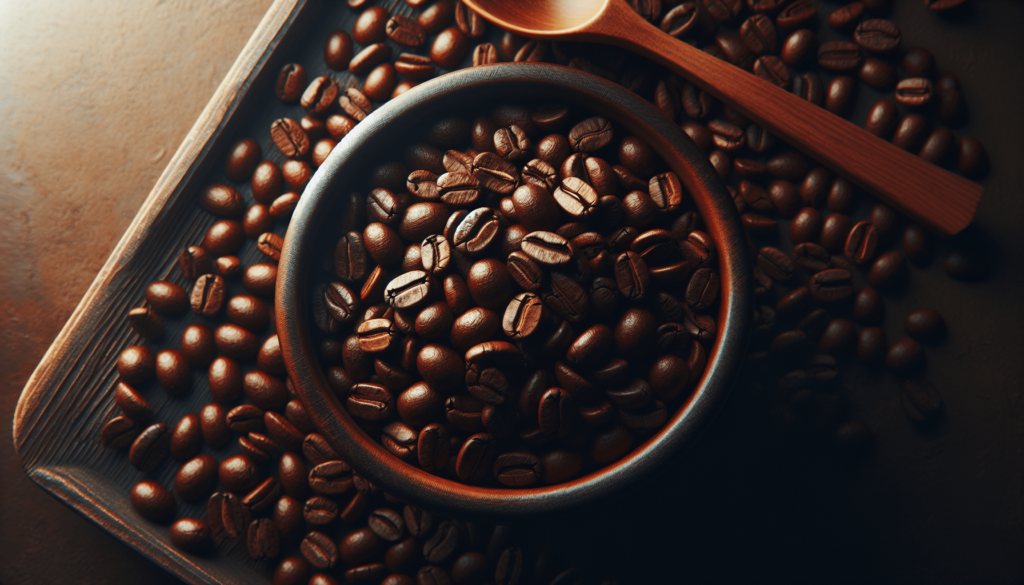Do you find yourself wondering which coffee truly stands out in terms of quality? The endless varieties, origins, and roasting methods can make the search for superior coffee overwhelming. However, understanding what makes coffee superior is far from impossible. In this comprehensive guide, you’ll uncover the secret nuances that set high-quality coffee apart.
Understanding Coffee Quality
The quality of coffee isn’t merely a subjective preference; it’s an intricate blend of factors that contribute to its overall excellence. These factors include origin, bean type, processing method, and roasting technique. All these elements come together to create a cup of coffee that isn’t just good but truly exceptional.
Origin: The Key to Flavors
The region where coffee beans are grown significantly impacts their flavor profile. Different regions possess unique climates, soils, and altitudes, all of which influence the taste of the coffee. Here are some renowned coffee-producing regions and their unique flavor profiles:
| Region | Flavor Notes |
|---|---|
| Ethiopia | Floral, Fruity, Wine-like |
| Colombia | Balanced, Nutty, Caramel |
| Brazil | Chocolatey, Nutty, Low Acidity |
| Kenya | Bright, Citrusy, Complex |
| Jamaica | Smooth, Sweet, Low Acidity |
Understanding these regional flavor profiles can help you identify your preferred coffee taste and guide you towards selecting high-quality beans.
Bean Types: Arabica vs. Robusta
The type of coffee bean is another crucial factor in determining quality. The two main types of coffee beans are Arabica and Robusta, each with its distinct characteristics.
| Bean Type | Flavor | Caffeine Content | Growing Conditions |
|---|---|---|---|
| Arabica | Smooth, Complex, Aromatic | Lower | Higher altitudes, cooler |
| Robusta | Strong, Bitter, Earthy | Higher | Lower altitudes, warmer |
Arabica beans are generally considered superior due to their nuanced flavors and aromatic qualities. On the other hand, Robusta beans have higher caffeine content but often lack the complexity found in Arabica beans.
The Impact of Processing Methods
Once coffee cherries are harvested, they must be processed to extract the beans. The method used can significantly affect the final taste of the coffee.
Washed Process
In the washed process, the pulp is removed from the cherries before fermentation. This method usually results in cleaner, brighter flavors. It is commonly used for high-quality Arabica beans, enhancing their natural brightness and acidity.
Natural Process
In the natural process, the cherries are dried with the pulp intact, which imparts more intense flavors. This method is more traditional and generally yields a fruitier, heavier-bodied coffee. However, it requires meticulous attention to avoid defects.
Honey Process
The honey process lies between the washed and natural methods. Some of the pulp is left on the beans during drying, which can produce diverse flavor profiles. This method can vary greatly in outcome but often results in a balanced cup with both clarity and sweetness.

Roasting: The Art and Science
Roasting transforms green coffee beans into the aromatic delights we brew. The roasting process is pivotal in maximizing the flavors of high-quality beans.
Light Roast
Light roast preserves much of the bean’s original character, highlighting regional and varietal nuances. It often features higher acidity and a more complex flavor profile.
Medium Roast
Medium roast strikes a balance between the bean’s inherent characteristics and the influence of the roasting process. You’ll find a harmonious blend of acidity, sweetness, and body in a medium roast.
Dark Roast
Dark roast significantly impacts the bean’s flavor, overshadowing its original characteristics with bold, smoky, and often bitter notes. While some prefer the intensity of dark roast, it may not be the best choice for showcasing the nuances of high-quality beans.
Factors Influencing Superior Coffee Quality
Beyond the methods of growing, processing, and roasting, several external factors can also influence the quality of coffee. Let’s dive deeper into aspects like freshness, brewing methods, and certifications that can guide you toward superior coffee.
Freshness: A Critical Element
Freshness has a considerable impact on coffee’s flavor and aroma. Coffee’s quality begins to degrade once it’s roasted, and it further deteriorates after grinding. Here’s a simple timeline for optimal freshness:
| Stage | Best Use Period |
|---|---|
| Whole Bean | 2-4 weeks after roasting |
| Ground Coffee | Immediately after grinding to 1 week |
| Brewed Coffee | Within hours, depending on the method |
To retain the best flavors, it’s advisable to buy whole beans and grind them just before brewing. Safeguarding your coffee in an airtight container and storing it in a cool, dark place can also help maintain its freshness.
Brewing Methods: Influence on Taste
The method you use to brew your coffee can dramatically influence the final taste. Various methods extract different flavor compounds, creating a distinct cup profile.
Pour-Over
The pour-over method involves manually pouring hot water over coffee grounds in a filter. This gives you great control over the extraction process, resulting in a clean and nuanced cup.
French Press
The French press steeps coarse coffee grounds in hot water before pressing them through a metal filter. This method typically produces a full-bodied coffee with robust flavors due to the lengthy contact time between water and coffee grounds.
Espresso
Espresso is made by forcing hot water through finely-ground coffee at high pressure. This method results in a concentrated, intense coffee with a rich, crema-topped layer.
Aeropress
The Aeropress uses air pressure to push hot water through coffee grounds. It’s praised for its versatility and ability to produce both concentrated and regular coffee with varying flavor profiles.
Certifications: A Stamp of Quality
Several certifications can help identify superior quality coffee. These certifications not only ensure certain standards of excellence but often promote ethical and sustainable practices.
Fair Trade
Fair Trade certification ensures that the coffee farmers have received a fair price for their harvest. This certification often correlates with better quality, as fair compensation generally leads to improved farming practices.
Organic
Organic certification indicates that the coffee has been grown without synthetic fertilizers or pesticides. This can result in a purer, more natural flavor profile.
UTZ Certified or Rainforest Alliance
These certifications focus on sustainable farming practices and good conditions for farm workers. They don’t directly guarantee superior taste but often align with high-quality production methods.

Enhancing Your Coffee Experience
Knowing which coffee beans and methods yield the best quality is just the beginning. To truly appreciate superior coffee, you’ll want to fine-tune every aspect of your coffee-drinking experience.
Grind Size: Tailoring for Excellence
The grind size can make or break your cup of coffee. Each brewing method requires a specific grind size to optimize flavor extraction.
| Brewing Method | Grind Size |
|---|---|
| Pour-Over | Medium (like sand) |
| French Press | Coarse (like sea salt) |
| Espresso | Fine (like table salt) |
| Aeropress | Medium-Fine (between table salt and sand) |
Using the correct grind size for your chosen method ensures that your coffee is neither over-extracted (bitter) nor under-extracted (sour).
Water Quality: The Unsung Hero
The quality of water used can significantly impact the taste of your coffee. Ideally, you should use filtered water free from chlorine and other contaminants. The optimum water temperature is between 195°F to 205°F (90°C to 96°C) to extract maximum flavor while avoiding bitterness.
Exploring Coffee Blends and Single-Origin
Whether you prefer single-origin or a blend can depend on what you’re seeking in your cup.
Single-Origin
Single-origin coffee comes from a specific region, farm, or even a single lot. It offers a chance to appreciate the unique flavors resulting from that particular locale.
Coffee Blends
Blends combine beans from multiple origins to create a stable, often more balanced flavor profile. Well-crafted blends can marry the best attributes from different beans, offering a complex and satisfying cup.
Conclusion: The Quest for Superior Coffee
Navigating the vast world of coffee can seem daunting. However, understanding key factors like origin, bean type, processing methods, brewing techniques, and even freshness can guide you toward the superior quality coffee you seek. Whether your preference leans towards a light, fruity Ethiopian brew or a rich, chocolatey Brazilian blend, knowing what makes each coffee unique helps in your quest for the perfect cup. Embrace the intricacies, trust your taste buds, and enjoy the journey to discovering superior quality coffee.
